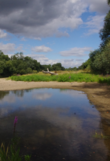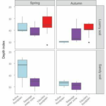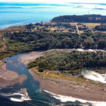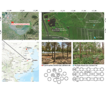In this collection

|
Papers published: 3 Documents added: 8 Printed version: Paperback Unique views: 3093 Total views: 5080 |
Worldwide, the loss of biodiversity in wetlands, like rivers and their floodplains and peatland, but also in deltas and estuaries is dramatic. Reasons are intensive land-use such as farming and urbanisation, drainage, construction of levees or bank stabilisation, or straightening of river courses and coastlines. These impairments lead to a lack of typical functions of wetlands, such as carbon storage and habitat provision, which are major reasons for the decline of wetland ecosystem services and coastal biodiversity. Therefore, there is a huge need to restore dynamic processes of river-floodplain-coastal ecosystems to revitalise peatland, riverine landscapes and coastal wetlands, especially in the face of changing environment like increase of extreme events due to climate change. In the last decades all over the world, various restoration measures have been carried out to revitalise wetlands. Some of these measures already show success, others are on the way to improve wetland biodiversity and related ecosystem functions and services with the aim to implement international biodiversity goals and policies for adaptation to and mitigation of climate change.
The collection serves to bring together the very wide experience from science, policy and hands-on restoration of wetlands and coastal marine systems and to facilitate exchange among different disciplines.
In the collection we are looking for contributions addressing the following topics (among others):
- How does restoration take place, coming from a biological but also from a planning or a societal background?
- How did the targeted biodiversity or selected ecosystem functions and services perform? What's about monitoring implementation to measure the effects?
- Showing synergies of wetland restoration and climate change adaptation (e.g promotion of riparian vegetation and other floodplain typical habitats);
- What is the perception and acceptance of the surrounding society (stakeholders, land users, tourists etc.)?
- What are good biological indicators to measure effects of restoration?



